I just did something today which would have been suicidal 10 months ago. My colleague Little Mac and I, in the company of a Marine tank officer and Naval surface warfare officer (he’s a fires guy by trade) just strolled around the town of Naw Zad with no body armor, no helmets, no riflemen escorting us, munching on local bread and handing out candy to the kids. We are safer here than we would be in downtown Chicago. Naw Zad was once the third largest populated area in the province. By 2007 the civilian population had fled the area and there was nobody here except bad guys and a few hard pressed British and Estonian infantrymen.
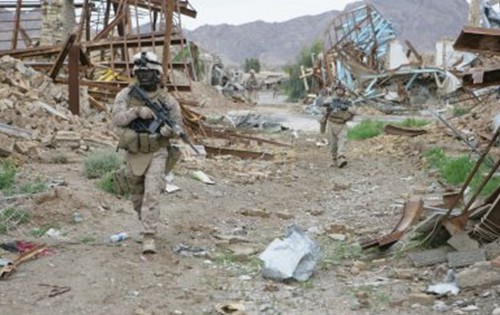
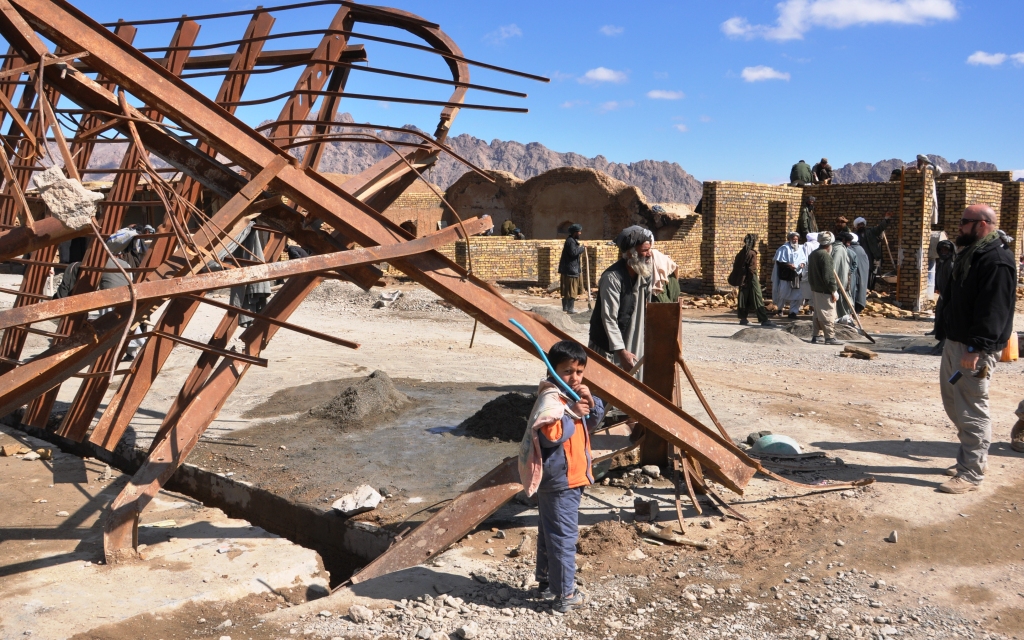
Fox company 2nd Battalion 7th Marines (Fox 2/7) arrived in Naw Zad to reinforce the Brits in late 2008 and were able to expand the security bubble but not by much. The Brits, Estonians and Marines fought side by side to expel the Taliban from this fertile valley but were hampered by restrictive ROE pushed down from on high by senior officers in Kabul who lacked common sense and experience at counterinsurgency warfare. The Marines and their allies lost a lot of men because they did not have the mass or firepower to do the job correctly. Way back then there was a lone voice in the blogsphere pleading with all who would listen to free up the combat power and let the Marines in Naw Zad fight. His name is Herschel Smith and his posts at the Captains Journal can be found here. It is worth your time to read them all.
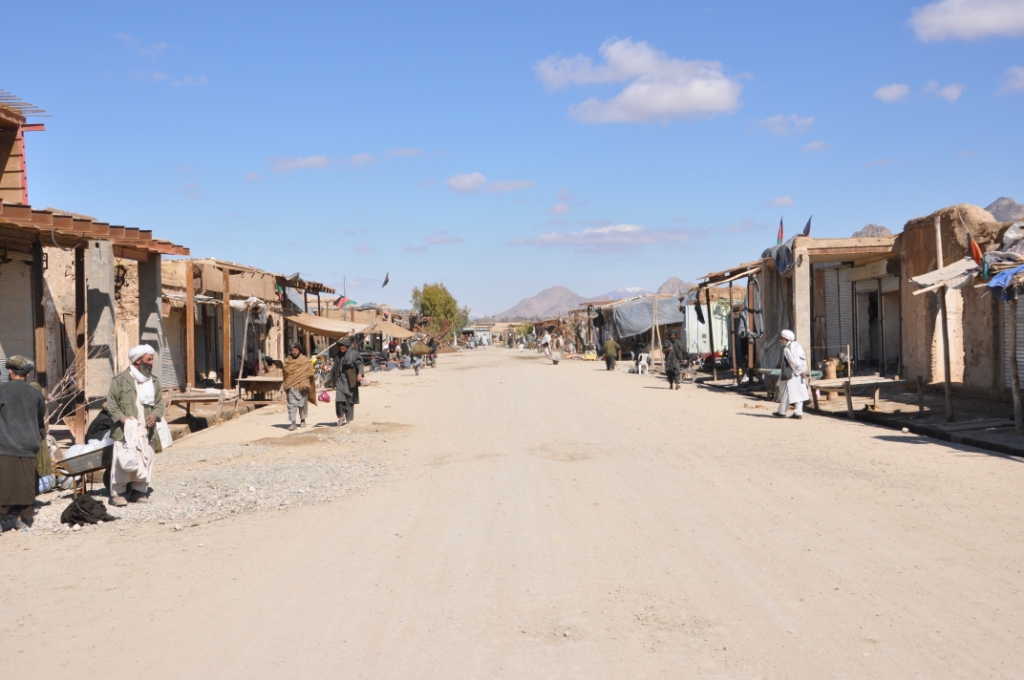
In the summer of 2009 the U.S. Marines had deployed the 2nd Expeditionary Brigade to Afghanistan and their first move was to clear out Naw Zad and the surrounding hamlets of all Taliban. The 2nd MEB was commanded by BGen Larry Nicholson who I was fortunate to serve with as a young Lieutenant back in the 80’s. He had his own Tac Air, his own artillery, his own rotary wing transport and gunships and he had his own ideas about how to fight. He didn’t have to go to the powers that be in Kabul or Kandahar because he didn’t need anything from them. He seeded the high ground overlooking the rat lines running into Naw Zad with sniper and recon teams in June. They immediately started collecting scalps and then on 2 July 2009 he launched Operation Khanjar dropping 2000 grunts onto Naw Zad and the surrounding villages to finish the Taliban off. The Taliban reacted as they always do when faced with superior forces – they broke contact and ran…into the sniper teams.
Fighting in the town of Naw Zad and its adjacent hamlets is long over. The Taliban can’t muster the manpower or firepower required to drive the Marines out so we are now deep into the “hold & build” stage of the operation and it is slow going. Every brick, piece of steel, bag of cement and all hand tools have to be trucked in from Camp Bastion or Lashkar Gah. My old battalion 1/8 has has deployed a rifle company (C 1/8) to Naw Zad for the past six months facilitating the hold and build while expanding the zone of safety further into the hinterlands. Actually the rifle company headquarters is based here with what looks like a platoon or so in the district center proper. The three rifle platoons are working areas to the north and southeast.

The roads to the south of Dahaneh are controlled by the Taliban. They cannot stand and fight the Marines like they do the army in the east because there aren’t enough of them, the terrain doesn’t facilitate ambushes, and they can’t run to Pakistan for sanctuary. So they use IED’s… a lot of IED’s which, as IED’s do in Afghanistan, strike disproportionately against the civilian population. In order to get building material into the valley local truckers insist on being escorted by Marines. The Marines know the Taliban are going to plant IED’s and they literally walk the convoys into the valley. The 65 kilometer trip from Bastion to Naw Zad takes two days; most of that time is spent waiting for the engineers to blow IED’s which have been seeded ahead of them.
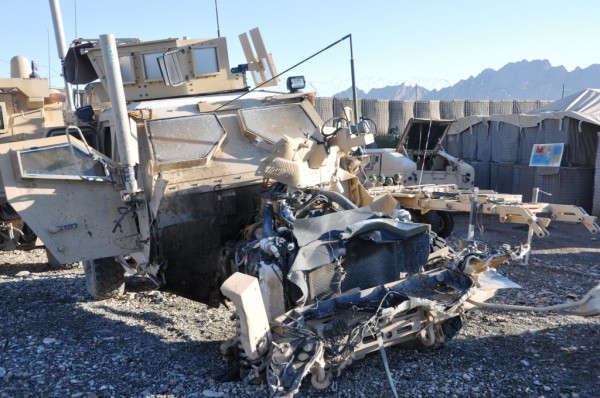
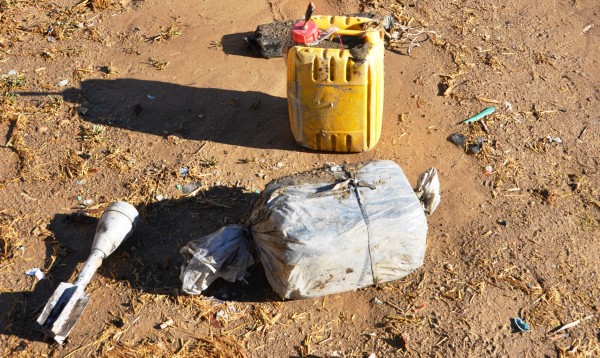
The villains have deployed countless numbers of IED’s targeting the Marines of 1/8. Only three of them scored hits but none have resulted in a fatality. One can only wish IED’s were so ineffective in other areas of Helmand Province. The Naw Zad area has been cleared; the hold and build underway. The Marines who are here would like to be somewhere else – preferably a place where the Taliban will stand and fight them. Infantry Marines, even after ten years of constant deployment, still hunger for a good fight. But that is not to be for 1/8 as they are stuck in place to do the hold and build. There was a time when Marines were dying here and there needed to be a lot more thrown into the fight. Now Marines are fighting and dying in other places like Sangin and they need more of their brother devil dogs to back them up. Now many of the folks I correspond with are starting to see what I was talking about when I opined that you need a hold and build force working directly for the ground commander. This is where contractors can save money, time and lives by freeing up the gunfighters to do what they do best. Kill villains, protect the innocent, and unmask the evil who prey upon the population.



The effort ISAF has put into trying to control Naw Zad, Sangin and the other northern districts of Helmand is completely disproportionate to their importance for the security of Afghanistan let alone the west. Neither district is heavily populated. Neither border Pakistan. Naw Zad doesn’t even have a paved road.
So why have the Brits and Marines put in so much effort? In the Brits case they took on Helmand in order to have their own province and the fight against opium production helped sell the war in Britain. Unfortunately the British Army wasn’t up to pacifying the province (or even the northern districts)and needed to be bailed out.
Cue the USMC. It also wanted it’s own province (now upgraded to it’s own Regional Command). The results so far have been mixed. The Marines appear to be more formidable opponents than the Brits but at far greater cost in dollars and in Sangin at least, friendly casualties. To what end?
Is reducing the Taliban presence in northern Helmand worth $ 20 billion per year to the US tax payer? What happens when the Marines leave? How many more years of garrisoning northern Helmand are required?
I just had the displeasure of watching Obama explain his budget plan. With a national debt that is 100% of GNP what is the justification of spending billions on a patch of desert and rock inhabited by folks who can barely get to Lashkar Gah let alone produce forces that pose a threat to the west?
Northern Helmand is an excellent example of military institutional desires trumping strategic sense. There is nothing there worth the cost and the sooner we reduce the resources allocated there the better.
Couldn’t agree with you more, Harlan, as to the disgraceful budget unloaded on the American people by the President.
If there is any value to A-stan as an American success story it will have to start with a basic decision about Karzai. If we can’t get rid of him, we have to marginalize him as much as possible and co-opt the ANA and ANP that we are training so that their loyalty is to the country and not to the Karzai Kronies. Then, and only then, will we be able to increasingly transition security to the Afghan forces and rotate our guys out, or perhaps, have them garrisoned as a quick reaction force to tamp out any “fires” (as Matt suggests) that the ANA/ANP can’t handle.
As I understand Helmand, its main value may be as a show place for what works and doesn’t work in Afghan COIN. Clearly the Marines have taken a different tack then the Army and allied troops and, whatever you may think of the value of Helmand itself, the Marine approach seems to be working (and could work alot better if it was adopted by the Army). This may be one of those, you-have-to-start-somewhere approaches. It’s not the Marines’ fault that they got put in Helmand. I am sure that they would much rather be given Kunar or Kandahar province (provided they are given free rein).
You know what would be interesting for meeting the needs of the hold and build portion of these strategies, is to follow the forest fire incident command model of disaster response to man this stuff. It is a model that uses both federal and contracted assets, it is fast, organized, and is tested. And after all, war is disaster–so why not use disaster response models to deal with that disaster?
The way it would work is a commander would make an assessment of what is needed in his AO after the ‘clear’ portion of the strategy, put in a request through a dispatch center for a incident commander (type 1,2,3,or 4 depending on the size and complexity of incident) to be assigned to a specific town, village (or task force, sector, however it is to be organized). That IC would then be tasked with the ‘hold and build’ strategy of that town, and make all request through a dispatch center as to what is needed.
The dispatch center would have numerous companies, both in country and outside of Afghanistan, on an ‘on call’ contract basis, as well as federal employees and any other government or non-governmental resources that could be available either in Afghanistan or elsewhere. Based on the request of the Incident Commander for that village, that dispatch would be tasked with finding and dispatching the required resources. This is how fire response works, and usually the dispatch starts local for companies and resources, and the circle of resources expands from there until the specific needs are met.(local, state/province, regional, national, and then international would be the order)
The database and software that the dispatch center would draw from would be modeled after the ROSS system that is currently used for forest fires. WILDCAD would be used as a running system to keep track of every incident, or village/town that is being run by an Incident Commander. Both Wildcad and ROSS are two systems that are instrumental to organizing disaster responses in the US, and they could be applied to war fighting (which is a disaster by all accounts)
As far as the dispatch centers and their locations? In the US, there are regions with centers that coordinate all the dispatch centers within their regions. What is cool about this dispatch concept is that you could put Afghans mixed into that dispatch, and help them to create their own dispatch capability. A dispatch center is vital to the emergency response of any town/village/region etc. It is how you get police or fire on scene, and the actions of dispatchers can save lives because of their response. So there would be a dual benefit of setting up a system like this. Help commanders with the hold and build–help local populations save their people and towns with an effective dispatch center and incident command.
So what would be the advantages of such a system? It is scalable, it is fast, and it is organized. Most of all, it is a system that has been tested in the most extreme disasters world wide. It was used for the 9/11 response, forest fires in the US and abroad, hurricanes, crime floods, you name it. I think it could be applied to war zone disasters, as well as help commanders with the hold and build aspects of their COIN strategies.
Also, let me clarify the fire/COIN analogy. Marines are fire fighters. They are called in to put out the fire in a region called the Taliban. Once that fire is put under control through the ‘clear’ portion of their strategy, the next part of the fire fighting operation is mop up or the ‘hold and build’ portion of the strategy.
In the fire world, smokejumper and hotshots are the Marines. They are the initial attack forces for fires, they are aggressive, and the love a good fight–much like the Marines. What smokejumpers and hotshot crews are not used for is cleaning clothes in the fire camp, or cooking food for firefighters in that fire camp. These forces do basic mop up on fires, but really, dispatch centers like to pull these forces off fires to attack other fires, as opposed to keeping them on fires as mop up forces. It is all based on the fire season and it’s intensity. If there isn’t a lot going on, a dispatch will keep those forces in place. If the world has blown up, and fire is everywhere, these resources will be used for initial attack fire fighting, because that is what they are good at and designed for. Any Marine or Army infantryman reading this, would probably like the initial attack aspect of forest fire fighting, and would be pretty bored with mopping up. Although mopping up a fire is essential to putting it out completely. So is the hold and build portion of COIN.
So Marines can do the hold and build portion, and I think if there is nothing going on for them elsewhere, then that would be a good use for them. But if there are parts of the country that are on fire and initial attack resources are needed badly, then by all means, we needed to be using these resources for that effort.
Also, what is interesting with fire operations is that sometimes a smokejumper or hotshot crew member would stay back and run the mop up operations by acting as an Incident Commander for that fire. This is common practice to use these initial attack forces as a management team for larger fires, if those firefighters are qualified to be Incident Commanders.
This would also keep someone that is familiar with the history of the fire and the terrain on scene, who is experienced in managing fires as the guy best qualified to manage the mop up (hold and build) aspect of the operations. As the fire is put out over the course of days, weeks, months, the level of management changes as does the resources required. The Incident Commander makes the call as to what is needed during all aspects of the fire, as well as it’s draw down. So a Marine or an attachment of Marines could be left back on the scene, to manage the hold and build portion, and act as the Incident Commanders–much like how Smokejumpers or Hotshots are used in fire fighting.
Gosh…you sure are excited about dear ole Naw Zad! Your Marines are in there doing what all Marines are trained to do…whoopie!
Those 3 MRAPs that got busted…they cost about $475,000.00 American dollars apiece, right? They transport your buds inside–about how many at a time? They travel how many miles in that open space you mentioned to where the bad guys await them?
The cost per mile to operate these monsters of self protection?
Ok…let’s take another tac in perspective. After your “devil dogs” rid the area of bad guys, after they mingle with the locals and through all the interpreters come to realize peace is at hand…they do what?
Pack up, ship home as “others” come in to do what? Open a Starbucks, or perhaps a Target or two?
For some, thinking beyond the end of a rifle is not important.
Remember, here at home–after so many months, those who have been investigating the world realities of our dear army’s Major Hasan’s murdering rampage at Fort Hood, have concluded a number of realities.
One they don’t seem to mention in any official report is Islamic Jihad. Political Correctness you say?
You know what is needed to turn that place and others around into a peaceful reality where a positive future is not out of the question.
Guess what? Your political buds in the American government have been lacing your meals with Viagra…just like those wonderful $475,000.00 MRAP gifts they’ve provided to protect a few while going out beyond the wire.
Watch how they pull the rug right out from underneath your maximus erectus ass!
There ain’t enough “bucks” nor “will” to finish off the job our valiant warriors have offered to those who claim to “have your backs” here at home.
You forgot this game is really being played by “lawyers” not warriors silly boy!
Thanks for the report. My oldest son was in the 1/5 and inserted into the Nawa District of Helmand in July of 2009. At the time I remembered reading about Naw Zad and how tough the fight was. I’m glad to hear of our success there because in July 2009 things seemed really bleak.
See all that twisted I-beam and steel framing? Paint it a primary color and call it public art!
http://listart.mit.edu/img/aboutUsInset.jpg
http://i.ytimg.com/vi/duCk-lGRVIw/0.jpg
I was in Now Zad in the summer of ’09 and am blown away by these pics of the bazaar. I never would have thought it would look like that. I’m in Sangin now and hopefully a girls school will be in here soon. RJ- I’ve been hit by ieds multiple times and I’ve seen humvees hit by ieds, I don’t care what they cost they save lives. I’m not a policymaker but if we’re going to be here then we need gear that saves lives.
It’s great to hear from an 03 Marine still in the fight. I’ll be visiting the 1/8 CP soon so please stop me and say hello if our paths cross
Not an 03, engineer in DS of 3/5. Glad you’re coming out here and I’ve been reading the blog since my first deployment, keep it up.
What we figured out is that people in the Pech really aren’t anti-U.S. or anti-anything; they just want to be left alone, said one American military official familiar with the decision. Our presence is what’s destabilizing this area. –NY Times.
Hmmmmm……sounds like northern Helmand
For those tracking the war via violent incidents remember as the US military withdraws from contested areas the totals may go down. A reduction in insurgent initiated incidents may not mean fewer insurgents (guaranteed to be the ISAF spin) or a reduction in anti-GOA/ ISAF sentiment.
Harlan, most Afghans hate the Taliban. The Taliban [and their allies such as Siraj, Ilyas Kashmiri/LeJ/Bde 055/Bde 313/Bde095, LeT, TTP, TNSM, HiG] are what’s destabilizing the area.
Granted this is less true in the most violent pockets of Afghanistan such as Khajaki/Sangin and Nuristan. 🙁
One major difference between the Pech and Khajaki/Sangin is that there are more international Taliban fighters and combat enablers in Pech than in Khajaki/Sangin. Plus 215th ANA Corps and Helmand AUP are improving a lot faster than 201st ANA Corps and Kunar/Nuristan AUP.
“For those tracking the war via violent incidents remember as the US military withdraws from contested areas the totals may go down. A reduction in insurgent initiated incidents may not mean fewer insurgents (guaranteed to be the ISAF spin) or a reduction in anti-GOA/ ISAF sentiment.”
Harlan, are you feeling well? That was actually . . . ugh . . . right on the money. 😉
Baba Tim Lynch, Sharin Shah [former deputy commander of 3-215 bde under BG Ghori] took command of 3-215 bde from BG Ghori. What do locals in central Helmand think about Sharin Shah? 3-215, one of the best bdes in the ANA, appears to be in the process of taking ownership of the central Helmand valley [including tactical overwatch of the AUP in Lashkar Gah] from the British lead ISAF.
In my view BG Ghori was one of the best bde commanders in the entire ANA. Too bad Pres Karzai passed over him for 215th Commanding Major General.
Sharin Shah has been one of the best kinetic ops leaders in the ANA for many years. Is he okay being stuck with a safe “hold and build” zone and politics, bureaucracy, governance, reconstruction?
Would we all be better off if Sharin Shah and his 3-215 was given Marjah; or Khajaki/Sangin; so that Sharin Shah could hunt the Taliban as per his own preference?
Harlan, what do you think about Sharin Shah and 3-215 ANA bde?
Anan: “Most” is 51% or greater. If we assume that all non-Pashtuns hate the insurgents that is already 60% of the total population. Your statement leaves the possibility that no Pashtuns hate the Taliban. I expect you didn’t mean this. The question is how many Afghans hate the Taliban enough to fight them. With a 33% annual desertion rate in the ANA so far the answer is not enough.
I don’t care about the ANSF and certainly not who’s in charge of it’s bits and pieces. With the exception of parts of NDS it’s rubbish and the “training” mission run by ISAF is simply cover for the eventual withdrawal. The ANSF will break apart a soon as ISAF leaves. The individuals will largely end up as bandits, Taliban or members of warlord’s private armies.
“Most is 51% or greater. If we assume that all non-Pashtuns hate the insurgents that is already 60% of the total population. Your statement leaves the possibility that no Pashtuns hate the Taliban. I expect you didn’t mean this.” Actually I thought this very thing when I wrote it. 😉
There is a waiting list of Afghans who want to join the ANA. A good Kandahar Pashtun boy can join the ANA more easily. But a Kunduz Tajik or Hazara boy is more likely to be put on the waiting list since his province and ethnicity doesn’t promote “ethnic balance” within the ANA.
The ANA doesn’t have a 33% annual desertion rate. It does have a problem with soldiers who overstay their assigned leave by a week or two.
Do not mistake insufficient training and insufficient competence as a lack of motivation.
“I don’t care about the ANSF and certainly not who’s in charge of it’s bits and pieces.” Who the senior officers are is one of the most important determinants of an ANSF unit’s effectiveness and of progress in the area an ANSF unit is assigned. To say you don’t care about who is in charge of various ANSF units is similar to saying that you don’t care which ISAF senior officers are assigned to which ISAF functions and ISAF units.
“With the exception of parts of NDS it’s rubbish” To confirm, do you believe that the ANA Special Forces, the 9 ANA Commando Combat battalions, Sharin Shah’s 3-215 bde in Central Helmand Valley, and 1-203 Bde in Khost are “rubbish”? Do any of your friends believe this?
“The ANSF will break apart a soon as ISAF leaves. The individuals will largely end up as bandits, Taliban or members of warlord’s private armies.” Only in your mind. If ISAF refuses to support the ANSF sufficiently, the ANSF is likely to redeploy and concentrate its resources in the center, North, West, and pockets of the East and South . . . yielding much of the South and East to the enemy. Afghanistan would likely to be convulsed in massive violence and an ongoing ANSF vs. Taliban war for many years to come. The drop in ISAF support for the ANSF would likely be partly offset by increased support from Russia, Iran, Turkey and India.
Some large ANSF formations would likely break up. Maybe much of or all of 201st Corps, 1-215, 3-215, 4-215, 3-205, 4-203 Bdes as well.
Do you really think 203 Corps, 207th Corps, 209th Corps, 111st Capital Division, would also fold?
Harlan, many of your comments are very perceptive. Why top it off with over the top criticism of the ANSF?
I should explain why I’m so down on the ANSF. The key to creating a good army or police force is sound, intensive basic training of a duration significant that allows desired changes both physical and psychological in the recruit. I believe a 30 week program is desirable for soldiers and one year for the police.
It is possible to have shorter training for highly motivated or qualified recruits but sadly the vast majority of Afghans do not fall into these categories.
It is very difficult to develop high quality NCOs after bad basic training. The fact that ISAF staff are still running basic training after eight years is proof that the basic training we have been giving to ANSF has been of such a low quality that the material taught has not “stuck”.
Good comment. As recently as November, 2009, there were only five thousand ANA and two thousand ANP being trained at any given time. This was because of a massive funding and trainer shortage in the ANA Training Command [now commanded by MG Aminullah Karim] and ANP Training Command [now commanded by MG Patang.] By way of contrast, between 2006 and 2010, the Iraqi Ministry of Interior alone use to train about 40 thousand Iraqi Police at any given time.
Today, about 24 K ANA and 11 K ANP are being trained at any given time. Still far too few. This is a major reason ANP basic recruits only get 6 weeks of training [if that, since the ANP is trying to reduce its waiting list.] Even ANP officers only get 20 weeks [maybe 6 months] of training. Increasing the length of ANP training cycles without increasing the number of ANP being trained at any given time would reduce the number of ANP trained per year and sharply slow the increase in ANP size.
The ANA has created a 4 week course to train ANA NCOs. I kid you not, only 4 weeks. The vast majority of ANA NCOs either have 4 weeks NCO training or no NCO training at all. And this is for the ANA, which is four years ahead of the ANP.
The chief advisor of the National Military Academy of Afghanistan [NMA-A] recently had a DoD roundtable blogger conference call which was cancelled because no international bloggers or journalists were interested in the NMA-A. NMA-A being the only cadet school for ANA officers that is longer than 20 weeks.
Many ANA and ANP believe that ISAF and the internationals have purposely tried to sabotage and impede the development of the ANA and ANP, maybe to appease the deep state. Plus many ANA and ANP blame ISAF for blocking Indian, Russian and Iranian aid to the ANSF.
Seven dead civilians including a couple of kids in a US air strike yesterday.
Aggressive tactics work only if they hit the right people. Yes civilians get hurt in wars but if the aim of your operation is to ” destroy the Wehrmacht” killing bunches of French civilians at least doesn’t interfere with accomplishing the mission. If your mission (if you can actually articulate it) is along the lines of “increase local support for the central government” then your attacks on the Taliban that regularly kill civilians are counter productive.
If you’re going to conduct ops that kill civilians week in and week out I don’t see how the odd canal or road improvement is supposed to make up for the murders (yes I know that is inflammatory but what term would you use if you were an Afghan and cousin Yusef and his family had just been Hell Fired).
ISAF is on track to kill more civilians than it did last year. Perhaps the second and third decades of the war will be better.
Thank you for posting this article, it relieves my stress to some extent. My son is in the L Co 3/2 and deployed to Now Zad on March 3, 2011 for 7 months. It is reassuring to see the progress that has been made there over the last year. I continue to pray for his safe return as well as the safe return of all our men and women stationed in this country.
My pleasure Diane and I, like you and your family, could not be prouder of the work your son and his fellow Marines have put into Naw Zad. Let’s hope it takes.
My son is also in the L Co 3/2 and have been deployed on March 3, very stressful situation but we get some news from time to time.
We can hate the war but we love our soldiers and are very proud of them.
Excellent. I got back from Now Zad about two months ago. THere is one paved road in the Now Zad dristrict. It is basicaly through the big bazzar. Also, just to let you know, the Marines of Charlie blew up way more than three MRAPS. We hit a lot with the mine rollers but i can count at least 5 down in Dehannas AO. Keep up the reports on Now Zad if posssible, I would really like to hear about the improvements that are still on going in the area. Thank you